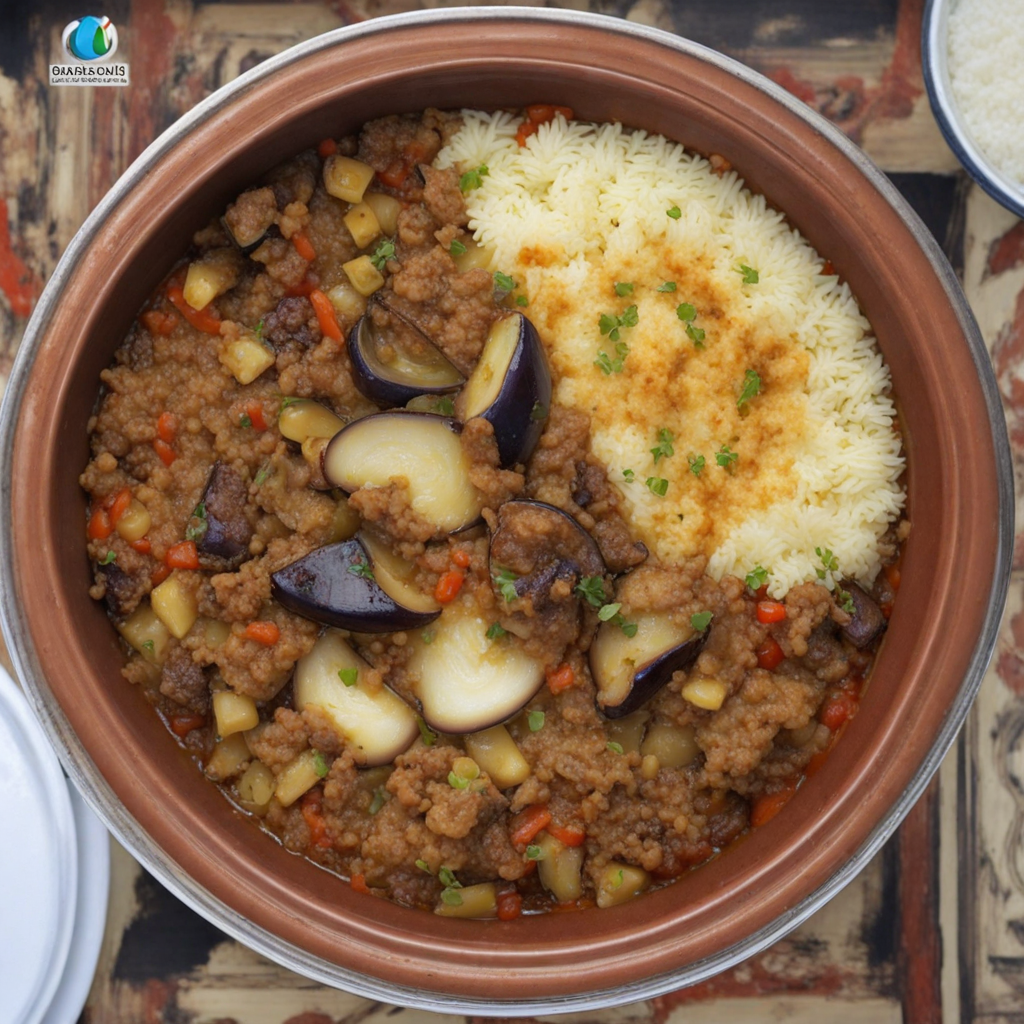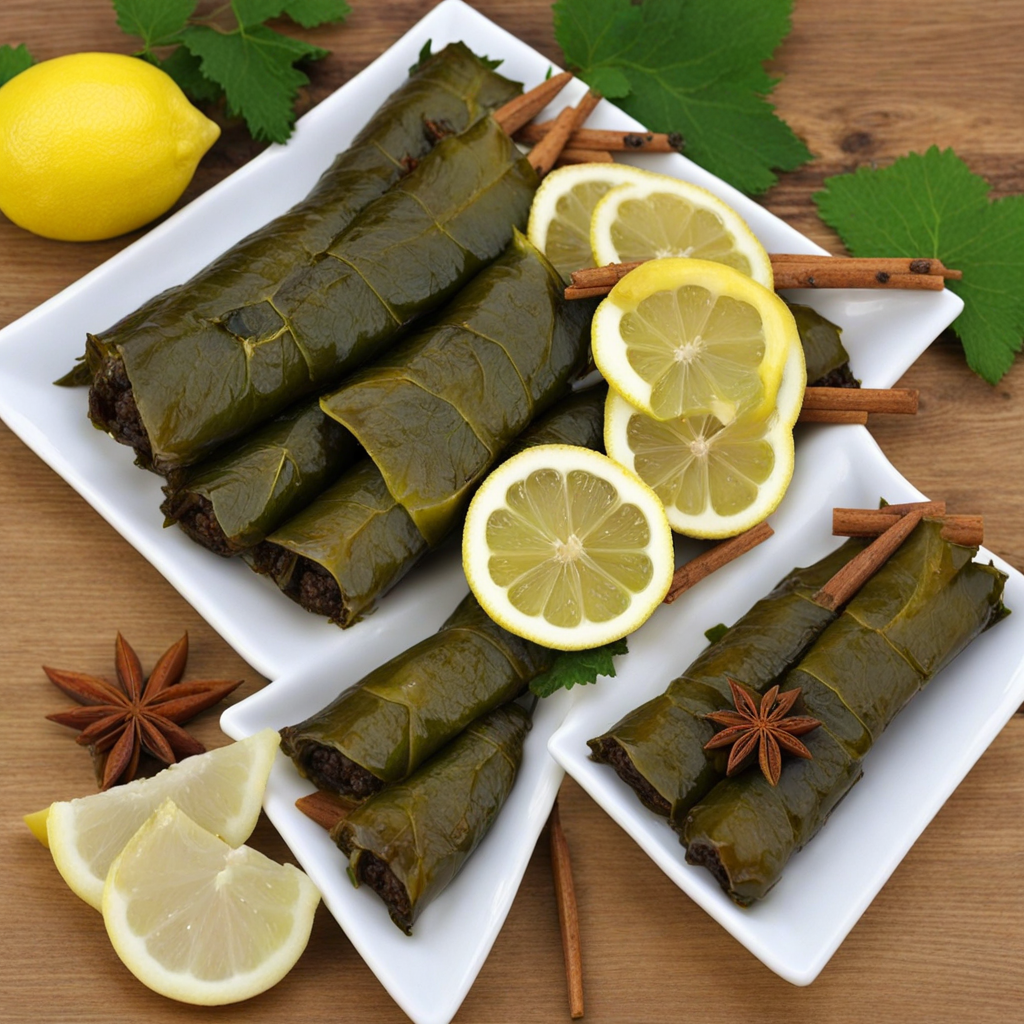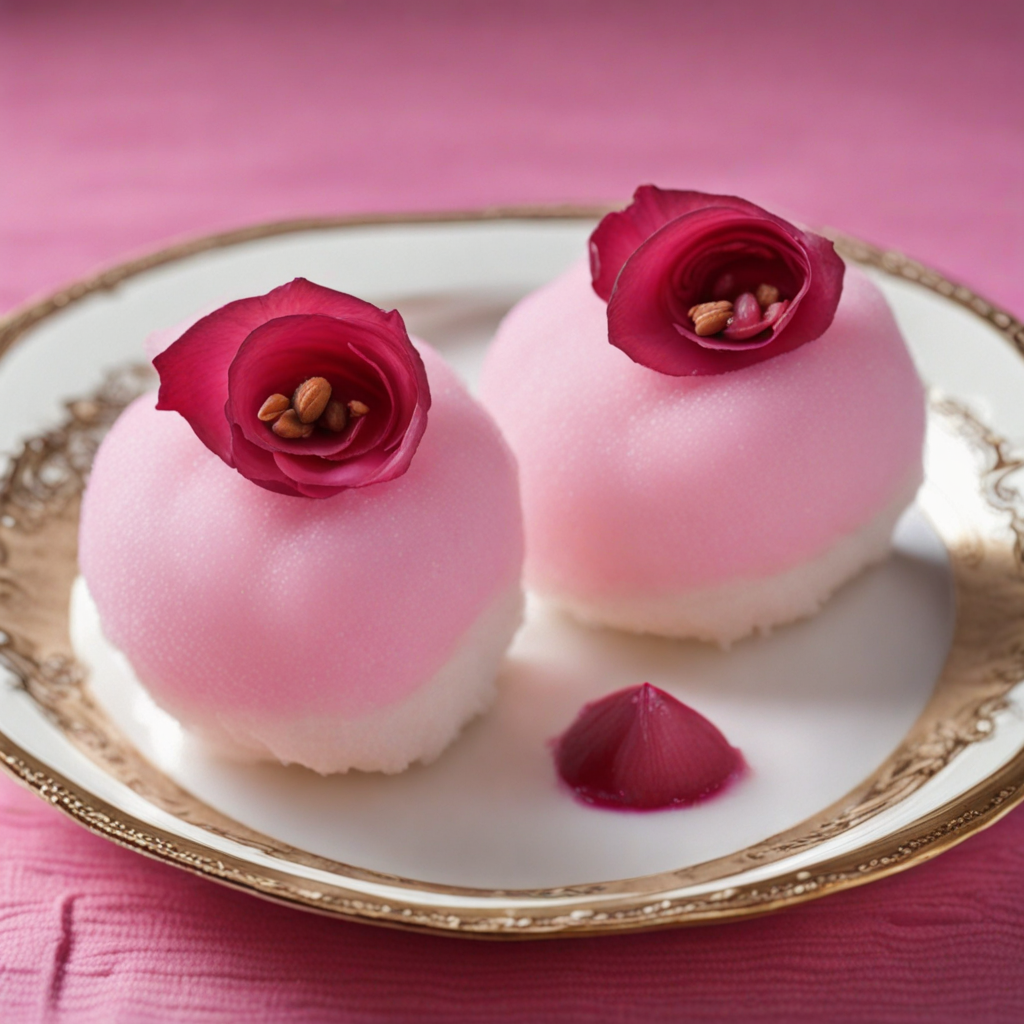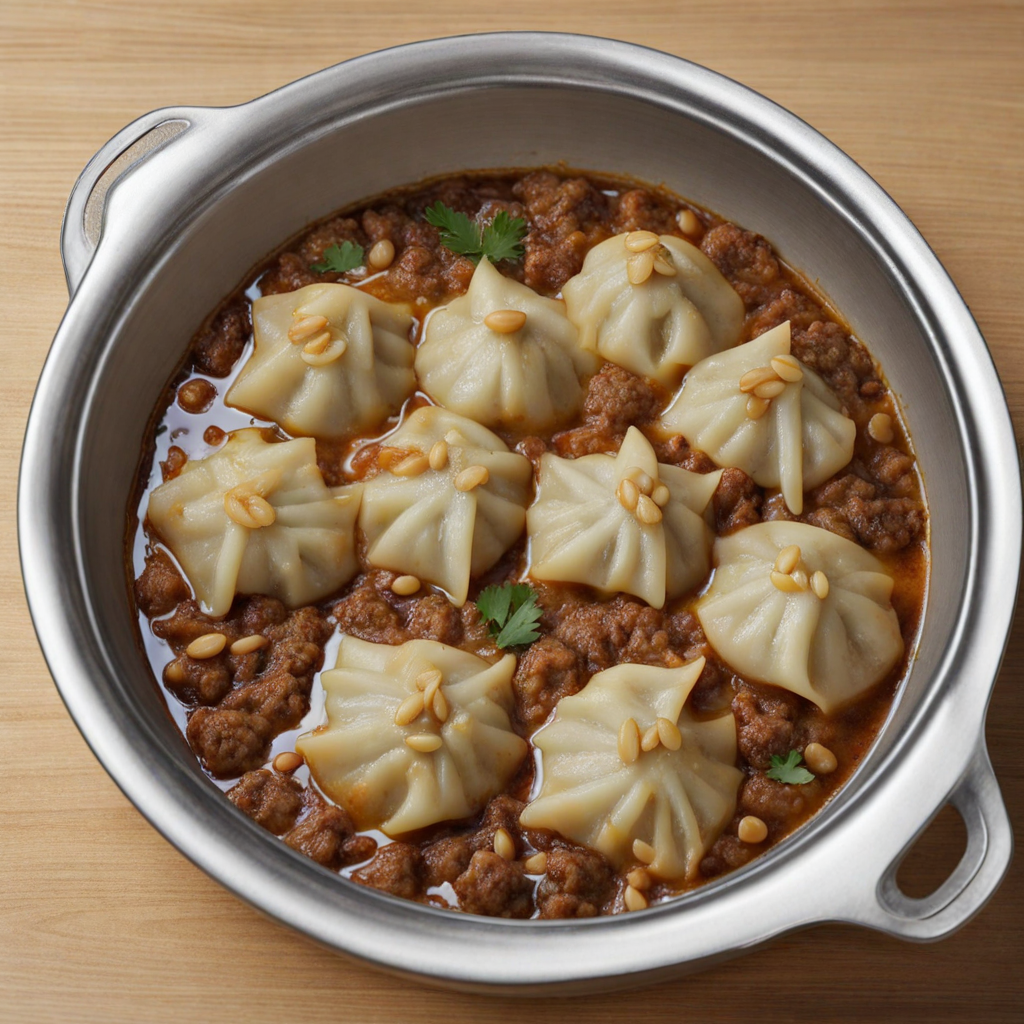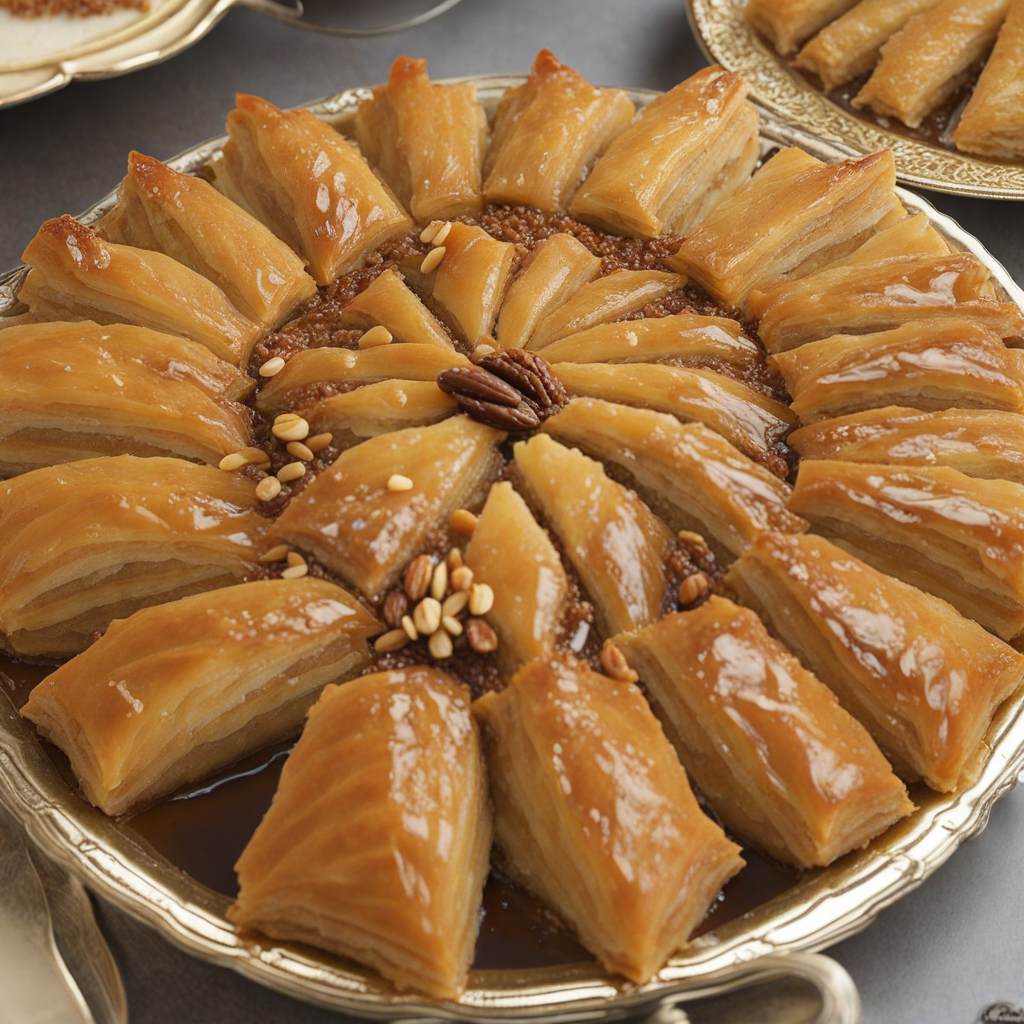Maqluba
Maqluba, a traditional Syrian dish, is a stunning and flavorful one-pot meal that translates to "upside down" in Arabic, aptly named for the dramatic way it is served. This dish typically combines layers of fragrant basmati rice, tender meat (such as chicken or lamb), and a colorful array of vegetables like eggplant, tomatoes, and cauliflower. The ingredients are cooked together in a rich blend of spices, including cinnamon, allspice, and cardamom, which infuse the rice and meat with a warm, aromatic depth that is both comforting and inviting. The cooking process culminates in an impressive reveal: once the pot is removed from the heat, it is inverted onto a serving platter, allowing the beautifully arranged layers to cascade out in a visually stunning presentation. The vegetables take on a caramelized finish, adding sweetness that balances the savory meat and the fluffy rice. Often garnished with toasted nuts, herbs, and a drizzle of olive oil, Maqluba becomes not just a meal but a centerpiece, showcasing the artistry of Syrian cuisine. When enjoying Maqluba, each bite offers a harmonious blend of flavors and textures, from the tender meat to the aromatic rice and the luscious vegetables. The dish is often accompanied by a side of tangy yogurt or a fresh salad, enhancing the overall experience. Maqluba is not just about taste; it is steeped in tradition, typically served during gatherings and celebrations, making it a dish that carries the love and warmth of Syrian hospitality in every mouthful.
How It Became This Dish
The History of مقلوبة (Maqluba): A Culinary Tradition from Syria Origins and Etymology The dish known as مقلوبة (Maqluba), which translates to "upside down," is a quintessential part of Levantine cuisine, particularly associated with Syria, Palestine, and Jordan. The origins of Maqluba are somewhat nebulous, as is the case with many traditional dishes that have evolved over centuries and crossed borders. However, its roots can be traced back to the medieval Arab world, where rice and spices were often combined with various meats and vegetables to create hearty meals. Maqluba's name comes from the Arabic word "qalb," meaning "heart" or "to turn over." This describes the dish's unique presentation: after cooking, it is flipped upside down onto a serving platter, showcasing a colorful array of ingredients. This dramatic presentation has made it a centerpiece at many family gatherings and celebratory occasions. Cultural Significance Maqluba holds a special place in Syrian culture and the broader Levant region, symbolizing hospitality, family, and tradition. It is often served during large gatherings, weddings, and festive occasions, where it serves as a communal dish that brings people together. The act of preparing and serving Maqluba can be seen as a ritual, often involving multiple family members who contribute to the cooking process. This collaborative effort fosters a sense of unity and belonging, reinforcing family ties. In the context of Syrian hospitality, the dish embodies the spirit of generosity. It is common for hosts to prepare a large pot of Maqluba, which can feed many guests. The dish's versatility allows for the inclusion of various ingredients, making it adaptable to the tastes and preferences of different families and communities. As a result, each family may have its own variation of Maqluba, creating a rich tapestry of flavors and traditions that define regional identities. Ingredients and Preparation Traditionally, Maqluba consists of rice, meat (often chicken or lamb), and a variety of vegetables, including eggplant, cauliflower, and potatoes. The choice of ingredients can vary based on seasonal availability and regional preferences. The rice is typically flavored with an array of spices, such as cumin, cardamom, and cinnamon, which gives the dish its distinctive aroma and taste. The preparation of Maqluba is an art form in itself. First, the meat is cooked with spices to develop a rich flavor. Next, the vegetables are fried to enhance their taste and texture. The rice is layered in a pot, followed by the meat and vegetables, and then covered with water or broth. The pot is then simmered until the rice is cooked and absorbs all the flavors from the meat and vegetables. The final step is the dramatic flipping of the pot onto a serving dish, allowing the layers to reveal their colorful arrangement. Historical Development As Maqluba evolved over the centuries, it absorbed influences from various cultures and culinary traditions. The dish reflects the region’s agricultural practices, utilizing locally sourced ingredients that have been staples in the Syrian diet for generations. The introduction of rice to the Levant can be traced back to the 8th century, when it was brought to the region from South Asia through trade routes. This new staple quickly became integrated into local cuisine, giving rise to a multitude of rice-based dishes, including Maqluba. In the Ottoman Empire, which included Syria, the culinary landscape was further enriched by the fusion of diverse regional flavors. As the empire expanded, it brought together various ethnic groups, each contributing their unique recipes and cooking methods. Maqluba may have been influenced by similar dishes from surrounding cultures, such as Persian and Turkish rice dishes, which also feature layering and flipping techniques. During the 20th century, with the advent of globalization and the migration of Syrian communities around the world, Maqluba began to gain international recognition. It has made its way into restaurants and homes in various countries, where it is enjoyed by people of all backgrounds. The growing popularity of Middle Eastern cuisine has led to an increased appreciation for traditional dishes like Maqluba, allowing it to reach new audiences and adapt to modern culinary trends. Regional Variations While the core components of Maqluba remain consistent, regional variations have emerged that reflect local tastes and available ingredients. In Palestine, for example, a common variation includes the use of lamb and a spice mix known as "seven spices," which adds depth to the dish. In Jordan, Maqluba may include additional vegetables like carrots or peas, while some families add yogurt or a spicy sauce on the side for extra flavor. In Syria, particularly in cities like Aleppo and Damascus, Maqluba is often prepared with a specific emphasis on the balance of flavors and the quality of ingredients. Aleppo's rich culinary heritage is reflected in its use of high-quality spices and meat, making its Maqluba particularly renowned. Additionally, Syrian cooks often take pride in their ability to achieve the perfect consistency of rice—fluffy yet firm—ensuring that each grain remains separate and infused with flavor. Contemporary Significance In recent years, as global interest in Middle Eastern cuisine has surged, Maqluba has emerged as a symbol of Syrian culinary heritage, often featured in cookbooks and cooking shows that celebrate traditional recipes. Chefs and home cooks alike are reviving this historic dish, experimenting with new ingredients while still honoring its traditional roots. Furthermore, the dish has become a vehicle for cultural expression, allowing Syrian expatriates to connect with their heritage and share their culinary traditions with others. The ongoing Syrian conflict has also brought attention to the cultural significance of Maqluba, as it serves as a reminder of the country's rich culinary history and the resilience of its people. Food has a unique ability to bring comfort during difficult times, and for many Syrians, the act of cooking and sharing Maqluba remains a symbol of hope, continuity, and the enduring bonds of family. Conclusion Maqluba is more than just a dish; it is a celebration of Syrian culture, history, and community. Its origins reflect the agricultural practices and culinary evolution of the Levant, while its preparation embodies the spirit of hospitality and family. As this iconic dish continues to adapt and thrive in contemporary kitchens around the world, it serves as a delicious reminder of the rich tapestry of flavors and traditions that define Syrian cuisine. Through Maqluba, the stories of generations are preserved, shared, and celebrated, ensuring that this beloved dish remains a cherished part of the culinary heritage for years to come.
You may like
Discover local flavors from Syria


